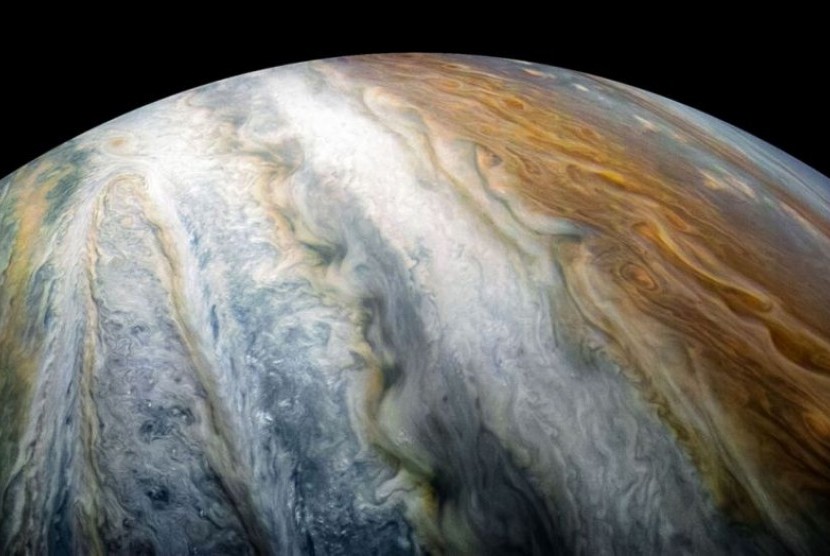Water vapor is only on one side of Europa.
REPUBLIKA.CO.ID, JAKARTA — The Hubble Space Telescope belonging to the American Space Agency (NASA) has spotted water vapor on Jupiter’s sea moon, Europa. This finding has the potential to reveal new clues about icy moons in our solar system and beyond.
The Hubble Telescope has previously detected water vapor in the Europe in the form of lumps that appear sporadically and sometimes extend perhaps 200 km into space from the moon’s ice sheet. This water vapor covers a large, buried ocean of liquid water. However, this new finding is something quite different.
Lorenz Roth, a researcher at the KTH Royal Institute of Technology in Stockholm, Sweden, analyzed archive ultraviolet observations of Europa made by the Hubble Space Telescope with the Space Telescope Imaging Spectrograph instrument in 1999, 2012, 2014 and 2015.
This analysis reveals the presence of large amounts of water vapor in the Europa hemisphere, which faces away from the moon’s orbital path around Jupiter. This water vapor persists over the long term, unlike clumps, Roth reports in a study published last month in the journal Geophysical Research Letters.
Roth and colleagues recently used a similar technique to find water vapor in fellow satellites Jupiter Ganymede, the largest moon in the solar system.
“Observations of water vapor on Ganymede, and on the other side of Europa, advance our understanding of the atmospheres of icy moons,” Roth said in a statement. Space, Tuesday (19/10).
“However, the detection of a stable abundance of water on Europa is a bit more surprising than on Ganymede because Europa’s surface temperature is lower than that of Ganymede.”
Europa reflects sunlight more effectively than Ganymede. Thus, Europa is about 33 degrees Celsius cooler than the larger moon. High temperatures on Europa reach around minus 160 Celsius, but a fair amount of the ice appears to sublimate there, turn into vapor and drift off into space.
Another question is the fact that this water vapor is confined to the left hemisphere of Europa. It is not clear why this happened.
We can get more clarity on this strange finding soon. In October 2024, NASA plans to launch a probe called the Europa Clipper, which will arrive at Jupiter’s system in April 2030.
The spacecraft will make dozens of close flybys of Europa, studying its oceans and ice shells and possibly even gliding through the blob, if one happens to light up at the right time. The Clipper will also look for good landing sites for the life-hunting lander mission, which Congress has ordered NASA to develop (though this last mission isn’t officially on NASA’s books yet).
– .


